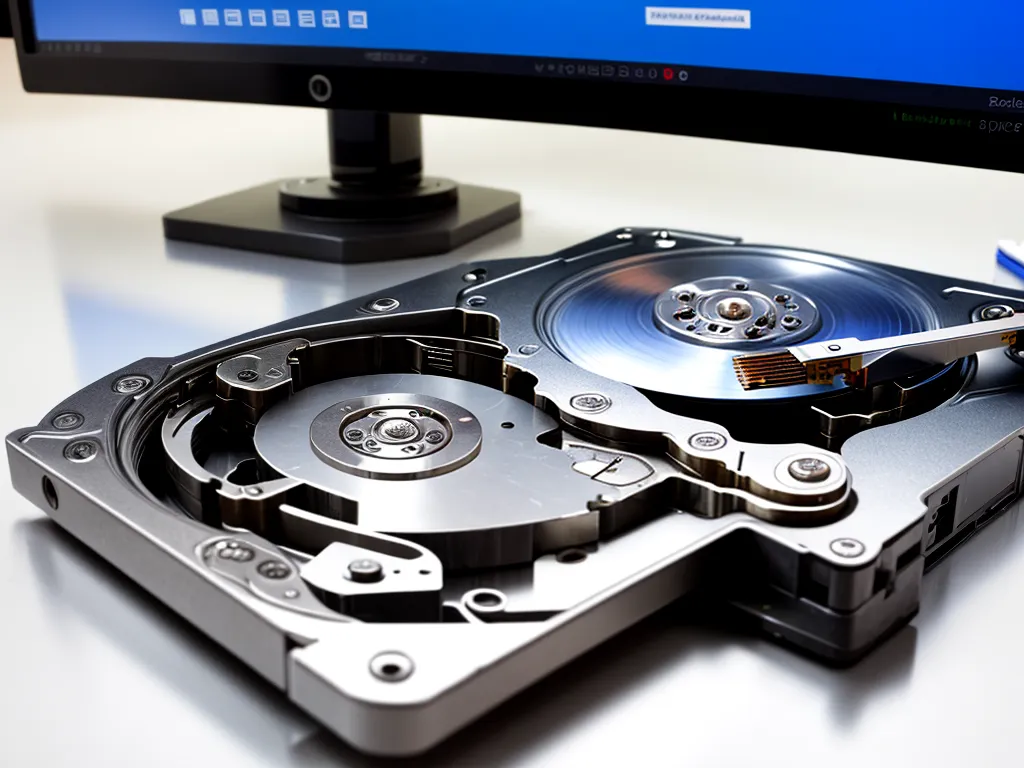
Introduction
Reformatting a disk drive erases all data on the drive and resets it to a blank, usable state. This seems like data would be permanently deleted. However, it is often possible to recover files from a reformatted disk drive using data recovery software as long as the drive has not been overwritten with new data.
In this article, I will provide an in-depth guide on recovering files from a reformatted disk drive. I will cover:
- How reformatting a disk drive works and why files can still be recovered
- Best practices for maximizing chances of file recovery
- Step-by-step instructions for recovering files using data recovery software
- Tips for avoiding common mistakes during the file recovery process
Understanding the technical details of how disk formatting works can help explain why file recovery is possible and guide you through the process.
How Reformatting Works
When a disk drive is reformatted, two key processes take place:
The File Table is Erased
- The file table tracks where files are stored on the drive.
- Erasing it removes the map telling the operating system where to find files.
- However, the actual file data is still intact in most cases.
The Disk is Overwritten with New Blank Sectors
- The drive is filled with new empty sectors to prepare it for reuse.
- If data is never written over the old sectors, the original files remain fully intact and recoverable.
- However, partial overwriting can corrupt files making recovery harder.
So in essence, reformatting simply deletes the index telling the computer where files are located. The files themselves often remain untouched until new data overwrites them.
Best Practices for Maximum File Recovery
If you have reformatted a disk drive and want to recover files from it, follow these best practices:
- Stop using the drive immediately – Any activity could overwrite deleted files making them unrecoverable.
- Only reconnect the drive when you are ready to attempt file recovery.
- Use data recovery software – Specialized software can scan disk sectors looking for old files independent of the deleted file table.
- Attempt recovery as soon as possible – The longer you wait, the greater the risk of file overwriting.
- Scan for recoverable files first – Preview which files can be recovered before attempting to restore them.
Carefully following these steps gives you the greatest chance of getting your files back after a reformat.
Step-by-Step Guide to Recovering Files
With the right data recovery software, recovering files from a reformatted drive is straightforward. Follow these steps:
1. Download and Install Data Recovery Software
Many excellent data recovery software options exist both free and paid. I recommend Recuva as a free option or Stellar Data Recovery for a full-featured paid solution.
2. Connect the Reformatted Drive
Connect the reformatted drive to your computer but do not save anything to it yet. You want to avoid any writes until file recovery is complete.
3. Scan for Recoverable Files
Open your data recovery software and select the reformatted drive to scan. The software will scan the drive sectors looking for recoverable files independent of the file system.
4. Preview and Select Files to Recover
Once the scan completes, preview and select the files you want to recover. Try to recover critical files first in case the drive fails.
5. Choose a Save Location
Choose a save location to restore recovered files to – preferably a different drive than the reformatted one.
6. Restore Files
Restore selected files to the designated location on your computer. Avoid saving recovered files back to the same reformatted drive.
And you’re done! With careful scanning and file selection, data recovery software makes it easy to recover deleted files from a reformatted drive.
Tips to Avoid Common Mistakes
Here are some tips to avoid common mistakes when recovering files from a reformatted disk:
- Don’t continuing using the drive after reformatting. Immediately stop writes.
- Don’t save recovered files back to the same drive. Use a different drive.
- Recover critical files first in case the drive fails during recovery.
- Don’t overwrite the reformatted drive by reformatting it again.
- Work from copies of recovered files, not the originals.
- Don’t recover files to the startup drive you are booted from.
Following these tips will help ensure the file recovery process is smooth and successful.
Conclusion
While reformatting a disk drive erases its files, the original data often still remains intact and recoverable until overwritten. Using the proper data recovery software and techniques, there is a good chance of recovering deleted files from a reformatted drive as long as you act quickly and carefully. Follow the recommendations in this article to maximize your chances of getting important files back.












